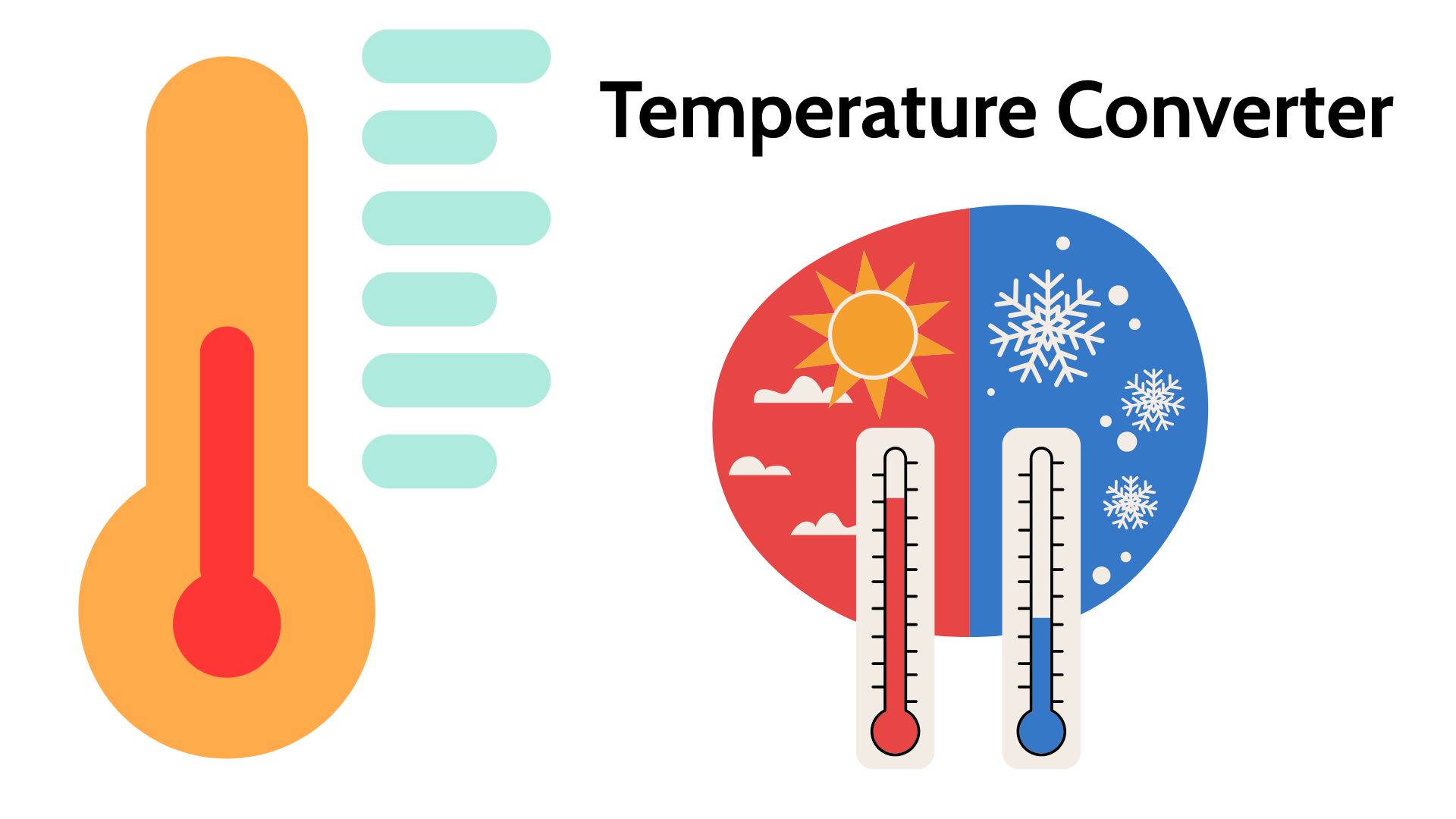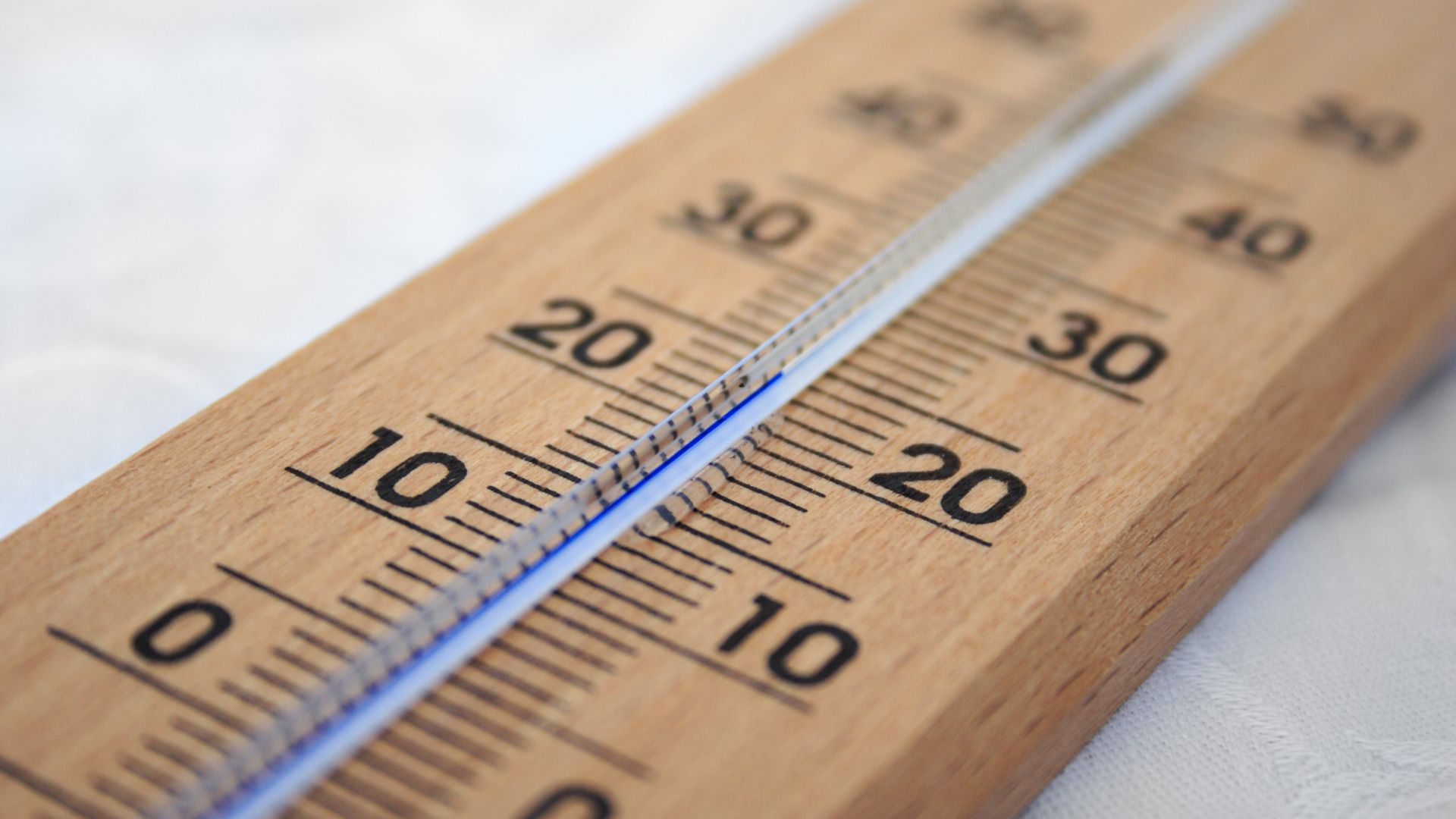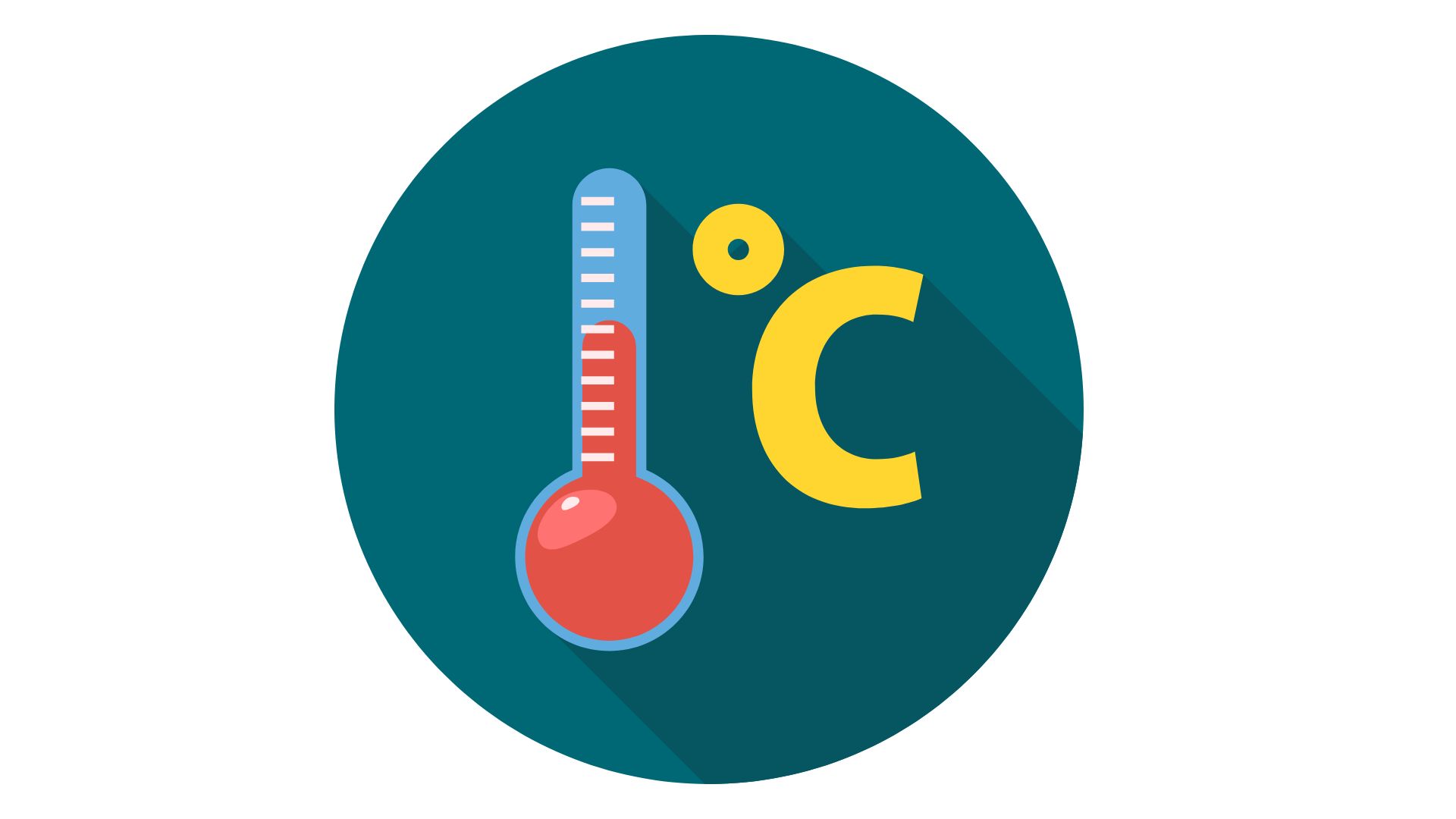
In our daily lives and across many scientific and industrial fields, understanding temperature is essential. Whether you’re checking the weather, baking a cake, or conducting a laboratory experiment, you’ll often encounter temperature measurements in different units. This is where a temperature converter becomes incredibly useful.
A temperature converter is a tool designed to help you quickly switch between various temperature scales such as Celsius, Fahrenheit, Kelvin, and more. It simplifies complex conversions and ensures accuracy whether you’re working in the kitchen or the lab. In this article, we’ll explore the different temperature scales, explain the conversion formulas, and show you how to effectively use a temperature converter for any purpose.
I. What is temperature converter tool?
A temperature converter tool is a digital or physical utility that helps you convert temperature values from one unit of measurement to another, such as from Celsius to Fahrenheit, Fahrenheit to Kelvin, and so on. It eliminates the need to manually calculate using conversion formulas and provides fast, accurate results.
Key Features of a Temperature Converter Tool:
-
Input field for the original temperature value
-
Unit selection options (Celsius, Fahrenheit, Kelvin, Rankine, etc.)
-
Instant conversion results into the desired temperature unit(s)
-
Often includes multiple outputs at once (e.g., enter °C and see °F and K)
Why Use a Temperature Converter Tool?
-
Saves time – no need to memorize or calculate manually
-
Reduces errors in scientific or engineering tasks
-
Useful across industries – including cooking, travel, weather, laboratories, and education
-
Mobile and desktop accessible – available as apps, websites, or calculator functions
Example:
Enter 100°C in a temperature converter, select “Convert,” and instantly get:
-
212°F -
373.15K
Whether you’re a student, traveler, or professional, a temperature converter tool is a quick and reliable assistant for handling temperature unit changes efficiently.
II. Understanding Temperature Scales

Temperature can be measured using several different scales, each developed for specific historical, scientific, or practical reasons. To use a temperature converter effectively, it’s important to understand the most common temperature scales—Celsius, Fahrenheit, Kelvin, and Rankine.
A. Celsius (°C)
The Celsius scale—also known as the centigrade scale—is widely used around the world, particularly in scientific contexts and in everyday use outside the United States.

-
Origin: Named after Swedish astronomer Anders Celsius, who developed it in 1742.
-
Reference points:
-
0°C = Freezing point of water
-
100°C = Boiling point of water (at standard atmospheric pressure)
-
-
Usage: Commonly used in meteorology, health, cooking, and industry.
-
Relationship with Kelvin: 0°C is equal to 273.15K.
B. Fahrenheit (°F)
The Fahrenheit scale is the standard temperature unit in the United States and its territories.
-
Origin: Introduced in 1724 by German physicist Daniel Gabriel Fahrenheit.
-
Reference points:
-
32°F = Freezing point of water
-
212°F = Boiling point of water
-
-
Usage: Predominantly used in the U.S. for weather, household, and industrial applications.
-
Note: The Fahrenheit scale has a smaller degree interval compared to Celsius, making it more precise for some everyday measurements.
C. Kelvin (K)
The Kelvin scale is the absolute temperature scale used primarily in science and engineering.
-
Origin: Developed by Lord Kelvin in 1848.
-
Reference point:
-
0 K = Absolute zero (theoretically the coldest possible temperature)
-
273.15 K = 0°C
-
-
Usage: Standard in scientific research, physics, and thermodynamics.
-
No degree symbol (°) is used—just “K.”
D. Rankine (°R or °Ra)
The Rankine scale is another absolute temperature scale, used mainly in thermodynamic engineering in the United States.
-
Origin: Introduced by Scottish engineer William Rankine in 1859.
-
Reference point:
-
0°R = Absolute zero
-
491.67°R = 0°F
-
-
Usage: Used in aerospace and thermodynamic calculations, particularly when Fahrenheit-based measurements are needed.
E. Comparison Table of Common Temperatures
| Description | Celsius (°C) | Fahrenheit (°F) | Kelvin (K) | Rankine (°R) |
|---|---|---|---|---|
| Freezing Point of Water | 0 | 32 | 273.15 | 491.67 |
| Boiling Point of Water | 100 | 212 | 373.15 | 671.67 |
| Room Temperature | 20–25 | 68–77 | 293–298 | 527–536 |
| Absolute Zero | -273.15 | -459.67 | 0 | 0 |
III. Temperature Conversion Formulas
To make accurate temperature conversions—especially when not using a digital temperature converter tool—it’s helpful to understand the key mathematical formulas. Each formula allows you to convert between Celsius, Fahrenheit, Kelvin, and Rankine with precision.
A. Celsius to Fahrenheit (°C → °F)
Formula:
°F=(°C×59)+32
Example:
Convert 25°C to Fahrenheit:
(25×59)+32=77°F
B. Fahrenheit to Celsius (°F → °C)
Formula:
°C=(°F−32)×95
Example:
Convert 68°F to Celsius:
(68−32)×95=20°C
C. Celsius to Kelvin (°C → K)
Formula:
K=°C+273.15
Example:
Convert 0°C to Kelvin:
0+273.15=273.15K
D. Kelvin to Celsius (K → °C)
Formula:
°C=K−273.15
Example:
Convert 300 K to Celsius:
300−273.15=26.85°C
E. Fahrenheit to Kelvin (°F → K)
Formula:
K=(°F−32)×95+273.15
Example:
Convert 98.6°F to Kelvin:
(98.6−32)×95+273.15=310.15K
F. Kelvin to Fahrenheit (K → °F)
Formula:
°F=(K−273.15)×59+32
Example:
Convert 310.15 K to Fahrenheit:
(310.15−273.15)×59+32=98.6°F
G. Rankine to Fahrenheit (°R → °F)
Formula:
°F=°R−459.67
Example:
Convert 500°R to °F:
500−459.67=40.33°F
H. Fahrenheit to Rankine (°F → °R)
Formula:
°R=°F+459.67
Example:
Convert 72°F to °R:
72+459.67=531.67°R
IV. How to Use a Temperature Converter Tool
A temperature converter tool is a simple, user-friendly interface that allows anyone—from students to scientists—to convert temperature values quickly and accurately across various scales. Whether it’s web-based, mobile, or built into a scientific calculator, the process is nearly the same.
A. Step-by-Step Guide to Using a Temperature Converter
-
Open the Converter Tool
-
Visit a reliable website, use a mobile app, or open a built-in tool on your device.
-
-
Enter the Temperature Value
-
Example: Input
100if you’re trying to convert 100 degrees.
-
-
Select the Original Unit
-
Choose from Celsius, Fahrenheit, Kelvin, or Rankine.
-
Example: Select Celsius (°C) if you entered 100°C.
-
-
Choose the Target Unit
-
Select the unit you want to convert to (e.g., Fahrenheit).
-
-
Click Convert
-
The tool will instantly display the converted result.
-
Example: 100°C → 212°F
-
-
View Multiple Results (Optional)
-
Many converters show results in all scales at once for convenience.
-
B. Features of a Good Temperature Converter Tool
-
Instant calculation without delay
-
Support for multiple scales (°C, °F, K, °R)
-
Mobile compatibility for on-the-go access
-
Auto-correct or validation for invalid inputs
-
Clear interface with labeled fields and units
C. Example Conversion Using the Tool
Let’s say you want to convert -40°C:
-
Enter
-40 -
Select Celsius as the input unit
-
Choose Fahrenheit as the output unit
-
Result:
-40°C = -40°F(a rare case where °C = °F)
D. Where to Find Temperature Converters
-
Online websites (e.g., Unit Converter Free, RapidTables)
-
Mobile apps on Android and iOS
-
Scientific calculators
-
Embedded in software like Excel (with custom formulas)
V. Common Use Cases for Temperature Conversion
Temperature conversions are not just academic exercises—they play an essential role in many real-world applications. Using a temperature converter becomes especially helpful when dealing with international standards, scientific measurements, and specialized processes. Let’s explore the most common scenarios where temperature conversion is necessary.
A. Cooking and Baking
Cooking appliances, ovens, and recipes often use different temperature units depending on the country.
-
United States: Uses Fahrenheit (°F)
-
Europe and Asia: Mostly use Celsius (°C)
Example Use Case:
A recipe from the U.S. calls for baking at 350°F, but your oven is labeled in Celsius. Using a temperature converter, you learn that:
350°F=176.67°C
This allows you to cook at the correct temperature without undercooking or burning the food.
B. Scientific Research and Experiments
In physics, chemistry, and biology, precise temperature measurements are vital. Most scientific fields use Kelvin (K) because it is an absolute scale.
-
Cryogenics, material science, and thermodynamics rely on Kelvin.
-
Absolute zero (0 K) represents the theoretical point where atoms stop moving.
Example:
Converting room temperature (25°C) to Kelvin for a lab experiment:
25°C+273.15=298.15K
C. Engineering and Manufacturing
Industries that involve metalwork, chemical processing, or electronics often require accurate conversions between units for quality control and standard compliance.
-
Thermal expansion calculations
-
Heat treatment processes
-
Semiconductor fabrication
Example:
A steel heat treatment process may specify a furnace temperature in Fahrenheit, but your instruments read in Celsius. A converter ensures alignment with specifications.
D. Travel and Weather Reporting
When traveling internationally, you’ll encounter weather forecasts in unfamiliar units.
-
A Canadian forecast might report 0°C, which may confuse U.S. travelers accustomed to Fahrenheit.
-
A temperature converter can quickly show that 0°C = 32°F (freezing point).
Use case:
Packing the right clothes based on converted weather forecasts.
E. Medical Applications
Body temperature is a key health indicator. Conversions may be needed for:
-
Thermometer readings
-
Patient care across international settings
Example:
Normal human body temperature:
-
98.6°F = 37°C = 310.15 K
Medical staff may convert between °F and °C based on equipment or training.
VI. Real-Life Conversion Examples
To solidify your understanding of how a temperature converter works, let’s go through several practical, real-world examples using multiple temperature scales. These conversions highlight everyday situations where quick and accurate results are important.
1. Boiling Water Temperature
Problem: What is the boiling point of water at sea level in all major units?
-
Celsius: 100°C
-
Fahrenheit:
(100×59)+32=212°F -
Kelvin:
100+273.15=373.15K -
Rankine:
373.15×59=671.67°R
2. Human Body Temperature
Problem: Convert average body temperature to Celsius and Kelvin.
-
Fahrenheit: 98.6°F
-
To Celsius:
(98.6−32)×95=37°C -
To Kelvin:
37+273.15=310.15K
3. Freezing Point of Water
-
Celsius: 0°C
-
Fahrenheit: 32°F
-
Kelvin: 273.15 K
-
Rankine: 491.67°R
These are standard reference points often used in science and calibration.
4. Extreme Cold Example: Antarctica Winter
Problem: Convert −60°C to Fahrenheit and Kelvin.
-
To Fahrenheit:
(−60×59)+32=−76°F -
To Kelvin:
−60+273.15=213.15K
5. Room Temperature Comparison
Problem: Convert 22°C (a comfortable indoor temperature) to other scales.
-
Fahrenheit:
(22×59)+32=71.6°F -
Kelvin:
22+273.15=295.15K -
Rankine:
295.15×59=531.27°R
6. When °C Equals °F
A curious fact:
-40°C = -40°F
This is the only point where the Celsius and Fahrenheit scales are numerically equal. It’s often used as a reference or fun fact in temperature conversion discussions.
VII. Advantages of Using Digital Temperature Converters
In today’s digital world, manual calculations are no longer the only option. A digital temperature converter offers convenience, speed, and precision—benefits that are essential across various industries and for everyday users. Let’s explore the major advantages of using these tools.
1. Time-Saving
Manually converting temperatures using formulas can be slow, especially when dealing with complex systems or multiple conversions. Digital tools perform instant calculations with a single click or tap.
Example: Converting 50 different temperatures from Celsius to Fahrenheit can be done in seconds with a batch converter tool.
2. Accuracy and Error Reduction
Human error is common when performing manual calculations. A small mistake in a formula can lead to incorrect results—potentially dangerous in scientific or medical settings. Digital tools eliminate these risks by using pre-programmed, validated formulas.
3. Multi-Scale Conversion
Most temperature converter tools provide simultaneous output in multiple scales. This means you can enter one value and instantly get the result in Celsius, Fahrenheit, Kelvin, and Rankine—all at once.
Example: Enter “100” and see:
-
100°C
-
212°F
-
373.15 K
-
671.67°R
4. User-Friendly Interface
Modern temperature converter tools are designed for ease of use:
-
Intuitive dropdowns or buttons
-
Clear input fields
-
Instant output without needing to press “Enter”
-
Mobile-friendly versions for quick conversions on the go
5. Accessibility Across Platforms
Digital temperature converters are available as:
-
Web tools
-
Mobile apps (iOS, Android)
-
Calculator plugins
-
Embedded widgets in websites
This wide accessibility ensures you can perform conversions anytime, anywhere—even offline in some app versions.
6. Versatile for All Users
Whether you’re a student, chef, traveler, engineer, or lab technician, a digital temperature converter adapts to your needs. It eliminates the learning curve and ensures accurate conversions regardless of your background.
VIII. Tips for Accurate Temperature Conversion
Even when using a temperature converter, it’s important to follow a few best practices to ensure your results are accurate, especially in scientific, industrial, or critical applications.
1. Be Mindful of Decimal Precision
Different applications require different levels of precision:
-
For cooking or casual use, rounding to the nearest whole number is usually fine.
-
In scientific experiments, retain several decimal places to maintain accuracy.
Example:
25°C = 77°F (rounded)
25°C = 77.00°F (precise)
2. Use Consistent Units in Formulas
If you’re converting manually, make sure:
-
You input values in the correct scale
-
You apply the correct formula
Mixing up Kelvin and Celsius, for example, leads to incorrect outcomes.
3. Avoid Premature Rounding
Don’t round off values in the middle of a multi-step calculation. Always round at the final result to avoid compounding errors.
4. Double-Check Extremes
When working with extreme temperatures (e.g., cryogenics or combustion), small errors can cause large consequences.
Always verify results with a trusted converter or reference chart.
5. Confirm Units When Reading Instruments
Before converting:
-
Check whether your thermometer or sensor reads in Celsius, Fahrenheit, or Kelvin.
-
Many digital tools automatically detect this—but not always.
6. Use Verified Temperature Converter Tools
Only use trusted websites, apps, or software:
-
Look for real-time feedback, unit labels, and clear interfaces.
-
Avoid poorly built tools that may miscalculate due to bad logic or bugs.
IX. Frequently Asked Questions (FAQs)
This section addresses some of the most common questions people have when using a temperature converter or dealing with temperature unit conversions in general.
**1. What is the easiest way to convert Celsius to Fahrenheit?
Use this formula:**
°F=(°C×59)+32
Quick Tip:
Double the °C, then add 30 (approximate shortcut).
Example: 20°C → 2×20 = 40 → 40+30 = 70°F (actual is 68°F)
2. Why do scientists prefer the Kelvin scale?
Kelvin is the absolute temperature scale that starts at absolute zero (0 K), where all molecular motion theoretically stops. It aligns with the metric system and allows easier thermodynamic calculations.
3. Is there a temperature where Celsius and Fahrenheit are equal?
Yes!
−40°C=−40°F
This is the only point where the two scales intersect numerically.
4. Can I convert temperature using a regular calculator?
Yes, as long as you know the correct conversion formula. But for speed and convenience, most people prefer using an online or app-based temperature converter.
5. What is absolute zero?
Absolute zero is 0 Kelvin (K) or −273.15°C or −459.67°F.
It’s the coldest possible temperature, where atomic motion stops.
6. What is the boiling point of water on each scale?
| Scale | Boiling Point |
|---|---|
| Celsius | 100°C |
| Fahrenheit | 212°F |
| Kelvin | 373.15 K |
| Rankine | 671.67°R |
7. Are digital temperature converter tools accurate?
Yes, reputable tools use standardized conversion formulas and offer precise results. Still, check the tool’s source and reviews if you’re using it for critical measurements.
8. Can temperature be negative on all scales?
-
Celsius and Fahrenheit: Yes, they include negative values.
-
Kelvin and Rankine: No, these are absolute scales that start at 0 (absolute zero).
9. Can I use temperature converters offline?
Yes. Many mobile apps or calculator programs offer offline functionality once downloaded.
10. Which temperature scale is used in space or aerospace?
Kelvin is typically used in scientific space applications.
Rankine may be used in U.S.-based aerospace thermodynamic systems.
X. Conclusion
Understanding how temperature works—and how to convert between different units—is essential in a world that uses multiple systems across regions and industries. Whether you’re adjusting a recipe, interpreting a weather forecast, managing laboratory experiments, or performing engineering calculations, a temperature converter provides a fast and reliable way to bridge the gap between Celsius, Fahrenheit, Kelvin, and Rankine.
Using a temperature converter tool eliminates guesswork, reduces calculation errors, and saves valuable time. It’s an indispensable resource for students, professionals, travelers, and anyone dealing with thermal data. From scientific research and medical applications to cooking and climate control, temperature conversion is a part of everyday life—and now, with digital tools, it’s easier than ever.
As you continue working with temperature data, remember the key formulas, use verified tools, and apply the best practices outlined in this article. Whether online or offline, a temperature converter ensures you’re always working with accurate, consistent, and meaningful temperature information.
